Featured image: With train travel, the journey can be just as beautiful as the destination, like the Bernina Express through the Swiss Alps / Photo by michelangeloop on Envato
Train travel tips to save you money and time
by Carolyn Ray
First of all, the best rate on the three-hour flight from London to Seville, one way, was over 400 pounds (C$700), without carry-on luggage, at a completely undesirable time. Second, the entire journey (assuming there were no delays) would take about 8 hours, including travel time to and from the airport. Then, there was the experience of being on the plane – small seats, no carry-on luggage, limited food options, etc.
In the end, I opted for the train, thinking of it as an adventure. I started at St. Pancreas Station in London around 5:30 am, and enjoyed a delicious breakfast on the Eurostar to Lille, France departing at 7 am. That afternoon, I arrived at Barcelona Sants, right downtown, at 7:30 pm. Even though it was a longer trip, I was able to write, read, nap, eat, walk around and look out the window at beautiful scenery. Best of all, I felt no anxiety. I had plenty of time to make my connections in Lille and Lyon.
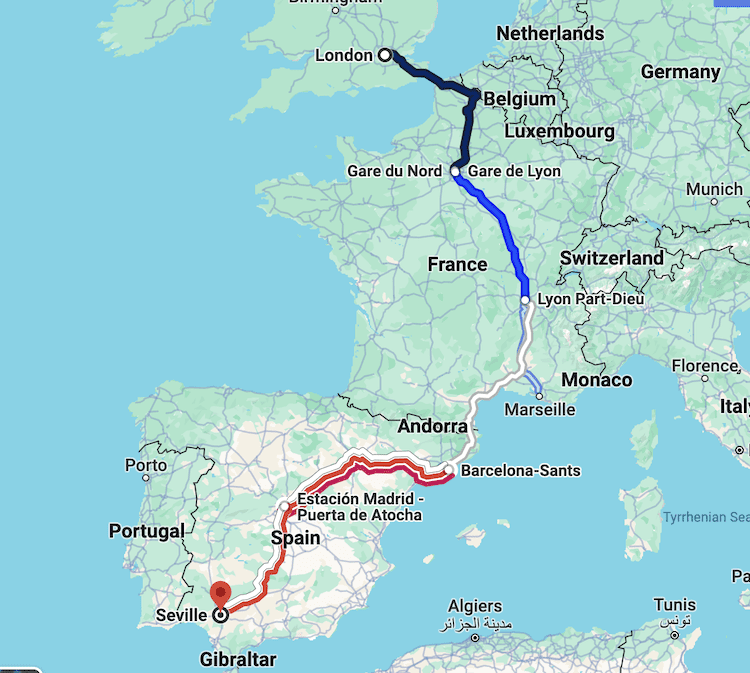
Shifting our mindset about train travel
It’s well-documented that air travel is the fastest-growing contributor to climate change. Flights produce greenhouse gases – mainly carbon dioxide (CO2) – from burning fuel. These contribute to global warming when released into the atmosphere. According to the BBC, Aviation contributes about 2% of the world’s global carbon emissions, according to the International Air Transport Association (IATA). It predicts passenger numbers will double to 8.2 billion in 2037.
Research from Eurostar shows that taking the train instead of flying can cut CO2 emissions by 90 per cent. In 2023, France banned short-haul flights, saying any trips that are possible in less than two-and-a-half hours by train cannot be taken as a flight. Similarly, Spain is proposing a short-haul flight ban for routes where a train journey is possible under 2.5 hours.
While train travel may not be our first thought in the United States and Canada, there are over 220,000 miles of train tracks in the US. Canada has over 30,00 miles (49,422 kilometres) of total trackage, with passenger options on Via Rail and Rocky Mountaineer. And with flight prices going up, train travel can be a welcome alternative for those of us who enjoy a slower, more experiential journey.
How to get started in train travel
I’ve been a fan of the Man in Seat Sixty-One (seat61.com) since I started travelling by train in Europe and the UK. It’s my go-to place for accurate and detailed information about train travel, whether I’m in Italy, Spain, or Britain, or just dreaming about some of the more exotic train excursions like the Silk Route, from London to Kazakhstan.
But who IS the man in Seat 61? And is it just a marketing front for some large company, as so many websites are when you look below the surface? The answer, thankfully, is no! It’s actually a real human being, Mark Smith, working behind the scenes.
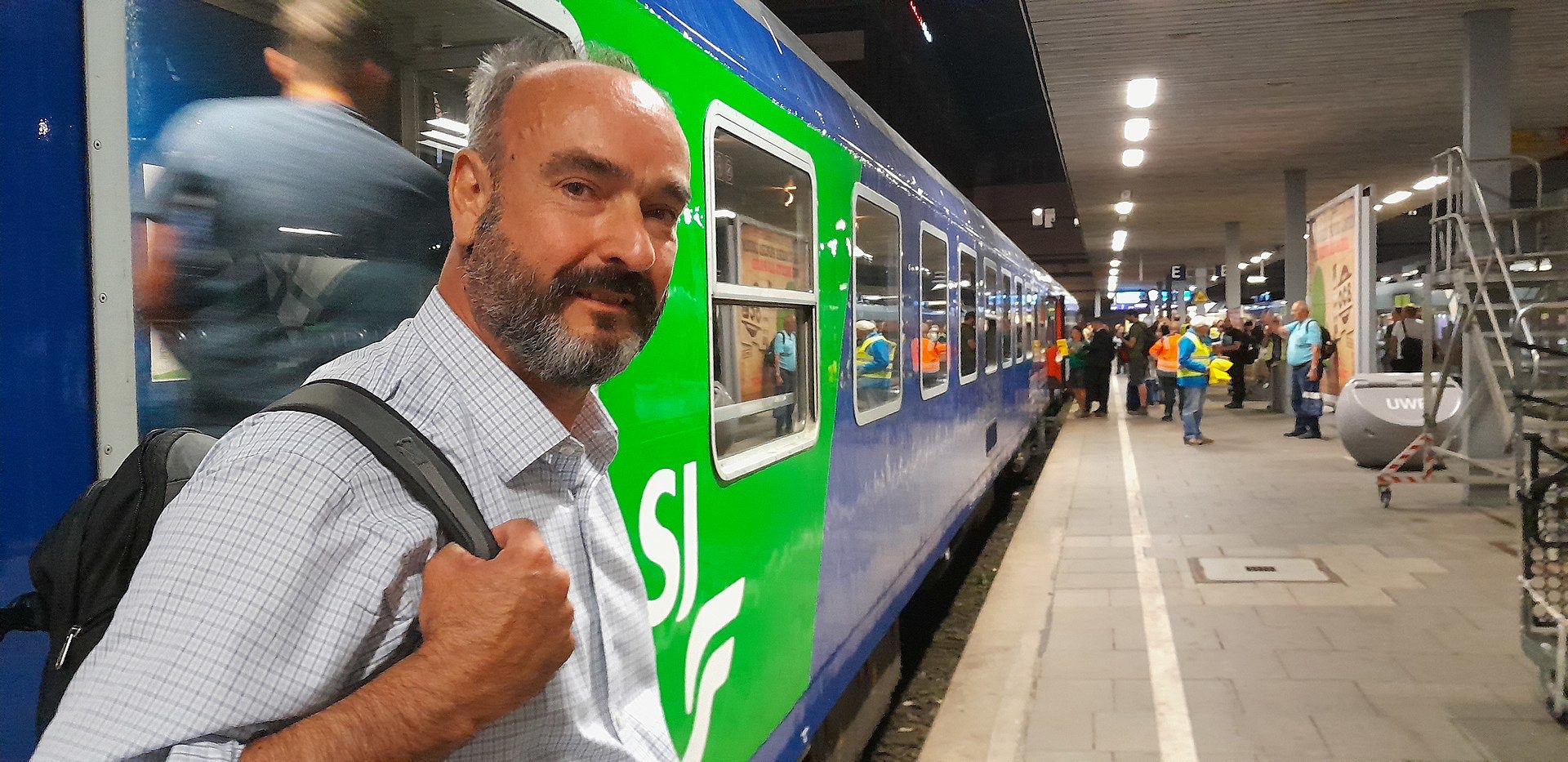
Smith, who lives in Buckinghamshire, UK, worked at British Rail as the Station Manager for London’s Charing Cross, London Bridge & Cannon Street stations in the early to mid 1990s. After working as a Customer Relations Manager for two large UK train companies, he worked in the Office of the Rail Regulator and later the Strategic Rail Authority, ending up at the Department for Transport in charge of the team regulating fares & ticketing on the British rail network. Since 2007, he has run The Man in Seat 61 full time.
Train travel can be rewarding
Smith says his site “aims to inspire people to do something more rewarding with their travel opportunities than schlepping to an airport, getting on a soulless airliner and missing all the world has to offer. It then sets out to enable people to take train or ferry by giving the confidence and know-how to book their trip themselves or call the right people to book it for them at affordable prices.”
“Many people want to cut their carbon footprint or are simply fed up with the stress of flying – and a significant number of people are afraid of flying or medically restricted from doing so,” Smith says on his website. “However, information on alternatives to flying is often difficult to find through a travel industry obsessed with flights.”
The problem with train travel, he says, is that it needs to become accessible and mainstream with travel agents, tour operators, online retailers.
“I use train operator websites, notably the German all-Europe timetable at int.bahn.de/en, to check times,” he says. “Intel on what changes is found in rail industry journals, key Twitter accounts, Google Alerts set up for key words, and so on. The European railways all change their schedules on the second Saturday in December, in the run-up to that it’s a solid month’s work updating every page.”

Train travel booking tips
Once you’ve decided to give train travel a go, here are some tips to help you make it a regular part of your travel planning routine.
1. Start at home
If you’ve never tried train travel, try something close to home. In 2023, I took a 7-hour Via Rail train from Toronto to Sudbury in Northern Ontario for a travel conference. That same year, I travelled from Quebec City to Toronto, with a stop in Montreal. In 2022, instead of flying from San Francisco to Portland, I took the overnight Coast Starlight train and enjoyed beautiful views of the mountains. Needless to say, trains have become an integral part of my travel.
2. Become familiar with each train operator’s website
Smith says that while it’s best to book on each operator’s website, there are some websites that do everything, such as Trainline.com and Raileurope.com. Both offer seniors discounts as well.
“These websites link to the Spanish, French, Italian, German, Swiss, Austrian, Benelux ticketing systems and can sell tickets across a swathe of western Europe,” Smith says. “But even they don’t connect to the Portuguese, Hungarian, Czech, Finnish, Norwegian, Romanian or Bulgarian systems. For example, the only place you can buy a €21 ticket between Prague and Budapest is either the Hungarian or Czech railways’ website or app.”
Smith is a fan of Switzerland’s train system. “Switzerland has the best network (SBB) in terms of frequency, reliability, integration and connectivity,” he says. “But I’ve a lot of time for the Austrian Railways, ÖBB, who have some superb trains and some of the best connectivity to neighbouring countries because of the way they co-operate with neighbouring operators.”
3. Get tech savvy
Make sure you have the apps from the train operator app on your phone, which automatically put tickets into your wallet and send alerts when there’s a change. Having the apps also allows you to compare prices with aggregators like Trainline before you book.
Case in point: while in Lucerne, Switzerland in April, I needed to book a train trip from Lucerne to Zurich. I was shocked to find a wide variation in pricing – almost $15. Take note of additional fees that are added on at the end to avoid a last-minute surprise.
Read More: Top Travel Apps Recommended by Women over 50
4. Buy a train pass if you’re doing extensive train travel
Most countries and the RailEurope app offer train passes that might save you money, and many include free access to museums and other attractions. Renfe in Spain provides seniors with a discount on all trips (with the purchase of a Tarjeta Dorada card for 6 euros a year. The Swiss Rail Pass gives you unlimited travel by ferry, train or bus and can be purchased for single or multiple days or weeks. It also includes free admission to over 500 museums & exhibitions all over Switzerland.
Click here to save money with a rail pass to the country of your choice!
5. Book in advance, don’t wait until the last minute
I’ve learned this the hard way. Prices go up closer to the date of travel, not down. I also recommend using a VPN (Virtual Private Network) like Nord VPN or incognito mode on your browser to check prices. There are sophisticated technologies working behind the scenes and the more you search, the more prices will go up. Learn more about using a VPN here.
6. Build in time for slower travel
In November 2022, I travelled from London to Prague by train, with stops in Paris and Munich. This allowed me to experience time in these cities rather than just fly over them. Even when I missed one train, I was easily rerouted on another one.
7. Look for tours that incorporate train travel into their itinerary
Many tour companies, in an effort to improve sustainability, have replaced coach travel with public transit and trains. Not only is this more sustainable, it’s much more enjoyable to walk around a train and meet others.
For example, in April 2024, I travelled on Switzerland’s inaugural “Swisstainable” Train Tour with Trafalgar Travel, which began in Zurich and included iconic train journeys on the Bernina Express and the Golden Pass, a stunning trip that goes from Lucerne to Montreux. We started at the Zurich airport and were shown how to use public transit system by our local tour guide. On my return from Lucerne to Zurich, I was able to navigate the system easily.
8. Pack light
Even though there aren’t the same luggage restrictions as on a plane, you need to be ready for unexpected changes on a train. It also helps to be able to lift your luggage above your head, down stairs, and on and off the train. Also, please don’t put your feet on the seat!
Packing light on a train has safety benefits too. “It’s important to keep your belongings close and have your passport ready at all times,” says my guide on Trafalgar Swisstainable Tour, Ellen Potters. “Most hotels will let you leave one larger bag and travel with a smaller bag.”
9. Be careful getting on and off
Often, there can be quite a step between the train and the ground, as I found out on my recent trip to Switzerland. Quite unexpectedly, I missed the step off the train and landed on my knee. Fortunately, I didn’t break my kneecap, but I was laid out for a few days recovering. Make sure you have travel insurance before you go!
10. Don’t be late
Most train stations in Europe have bag screening, and while you can bring liquids, you want to allow for security lineups. Unless you’ve bought a first-class ticket, look for the ‘2’ on the doors to avoid delays. In Switzerland, the trains leave on time, so it’s always good to arrive at the platform a few minutes early. While a plane may wait for you, a train won’t.
More About Train Travel
Sustainable Train Travel: A Breathtaking Journey Through the Swiss Alps
On Trafalgar Travel’s first ‘Swisstainable’ train tour, women can experience Switzerland’s most iconic train journeys and travel sustainably.
Five Superb Day Trips from Paris by Train
These five day trips from Paris by train will whisk you away for a day of discovery, each into a different universe.
Margaret’s Travel Treats: 10 of the Best Travel Documentaries to Feed a Curious Mind
As we look to future travel, here are a fresh selection of films and documentaries shared by JourneyWoman Margaret Byrne in Australia to ease her border blues.

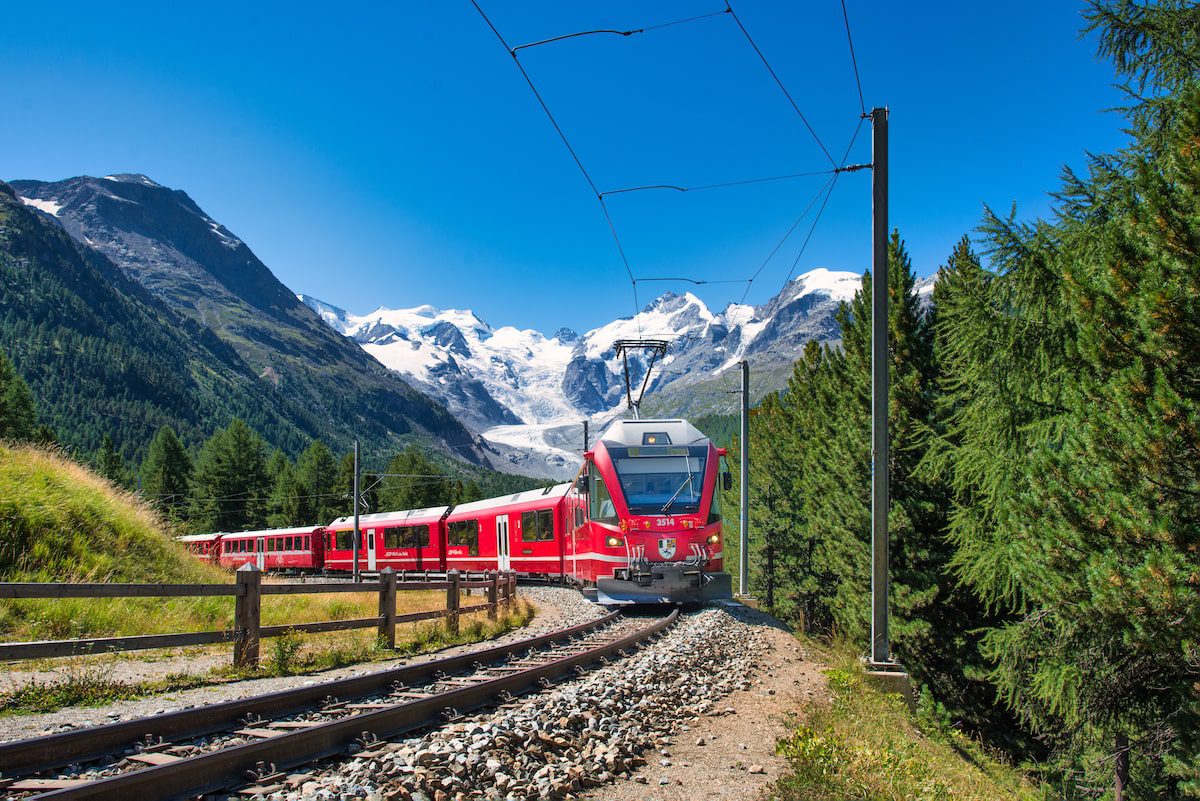

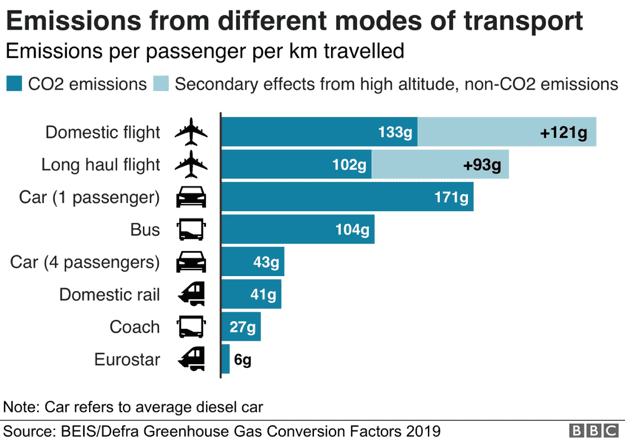
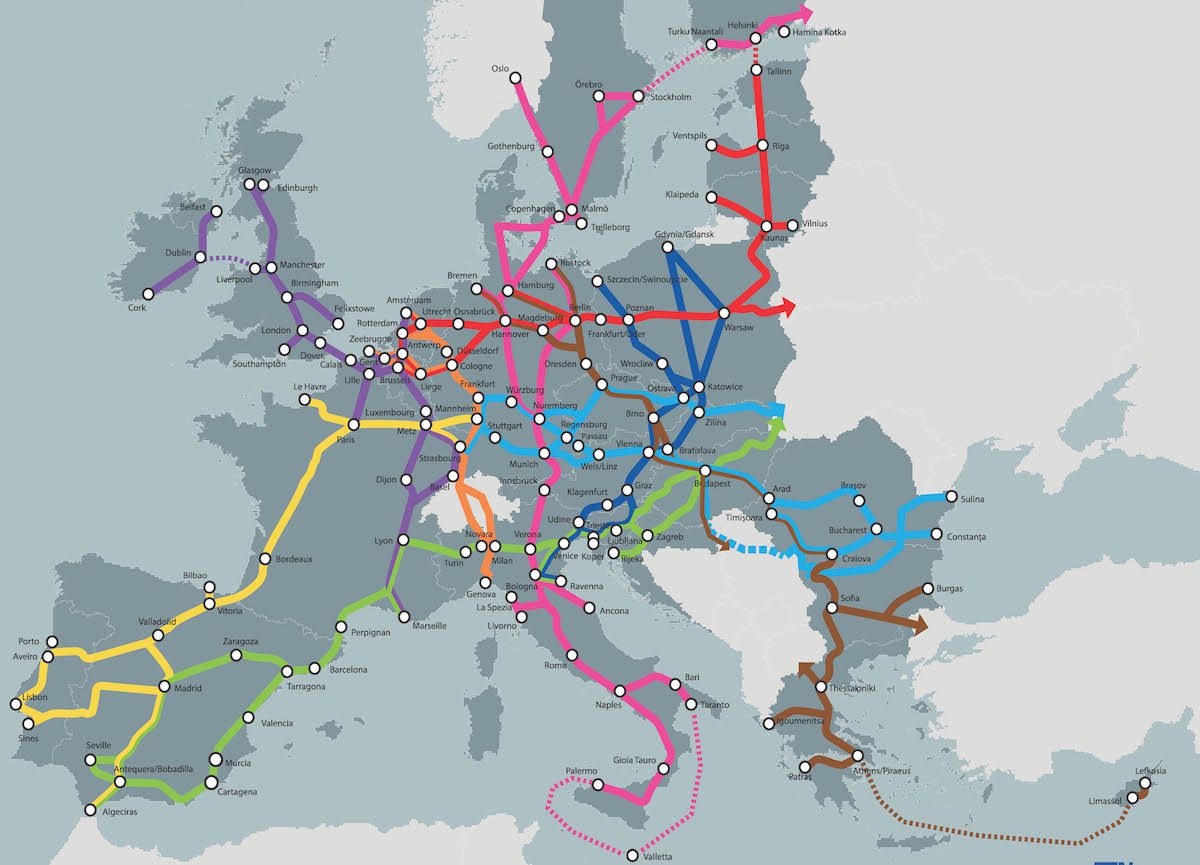

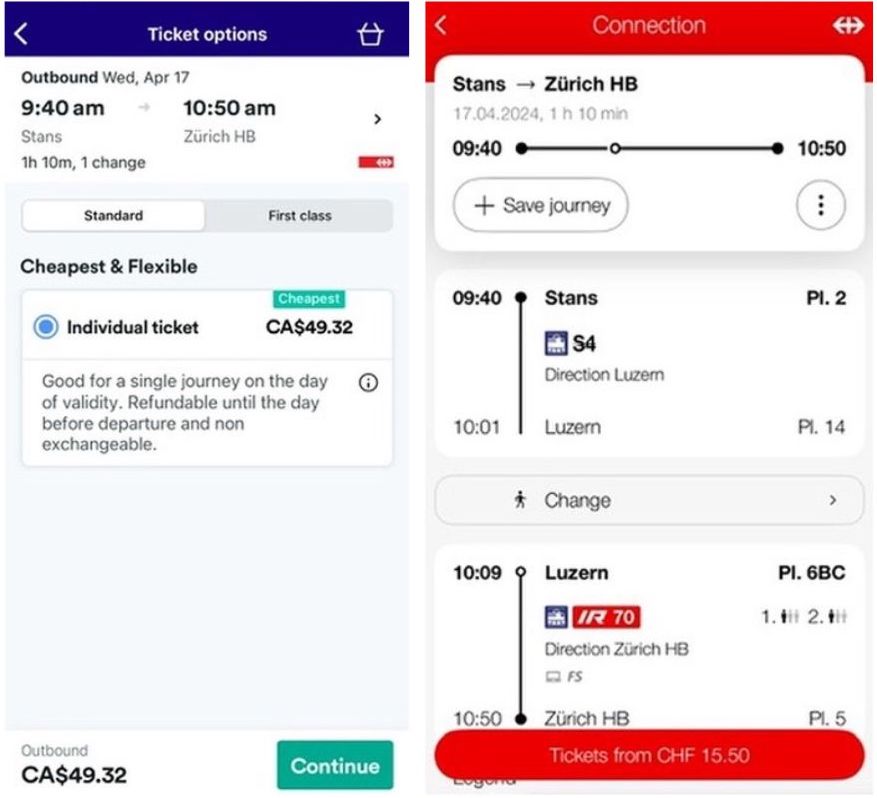




0 Comments
We always strive to use real photos from our own adventures, provided by the guest writer or from our personal travels. However, in some cases, due to photo quality, we must use stock photography. If you have any questions about the photography please let us know.
Disclaimer: We are so happy that you are checking out this page right now! We only recommend things that are suggested by our community, or through our own experience, that we believe will be helpful and practical for you. Some of our pages contain links, which means we’re part of an affiliate program for the product being mentioned. Should you decide to purchase a product using a link from on our site, JourneyWoman may earn a small commission from the retailer, which helps us maintain our beautiful website. JourneyWoman is an Amazon Associate and earns from qualifying purchases. Thank you!
We want to hear what you think about this article, and we welcome any updates or changes to improve it. You can comment below, or send an email to us at [email protected].